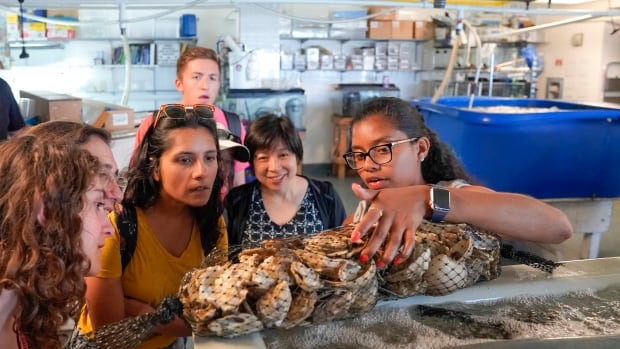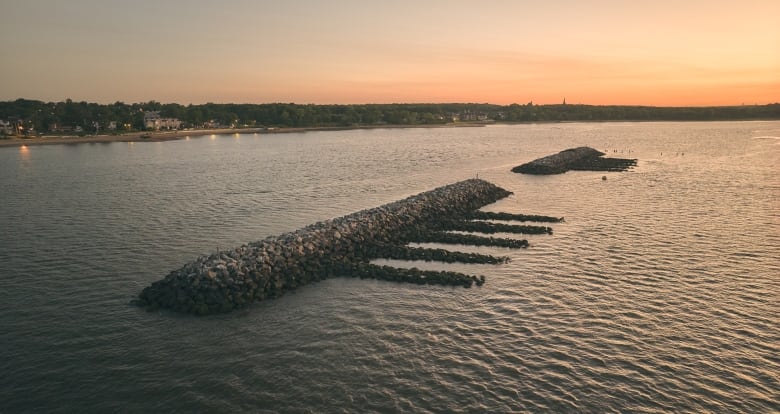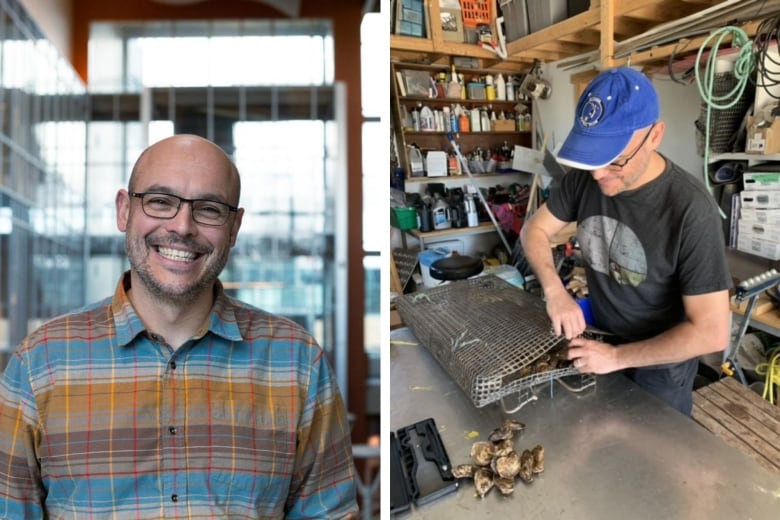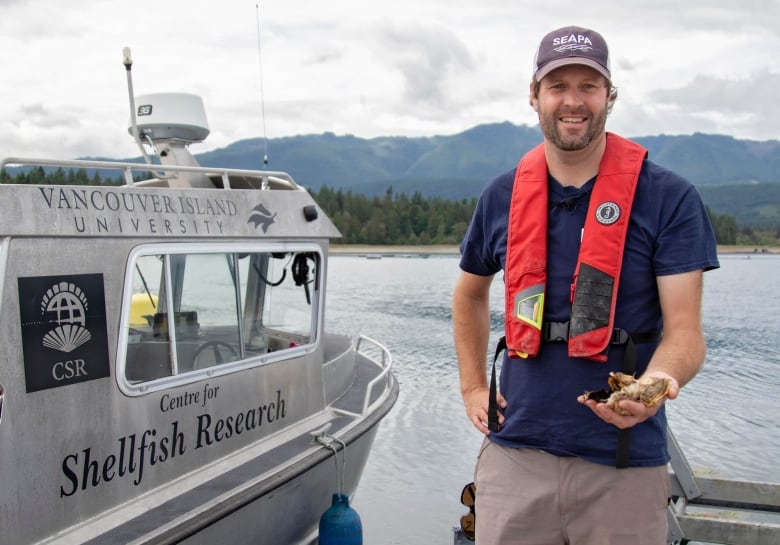
The Current9:21Using oysters to fight coastal erosion
In October 2012, Hurricane Sandy ravaged the U.S. eastern seaboard. The storm surge, flooding and winds caused extensive loss of life and damage in Tottenville, a neighbourhood surrounded by water on three sides in the Staten Island borough of New York.
In addition to its geography, however, the area had previously lost a natural protective barrier due to years of overfishing and pollution: oyster reefs.
Reefs are formed when oysters cluster together and grow on top of hard submerged surfaces such as rock or marine debris. They can buffer the impact of stormy waves and shoreline erosion.
Now, a shoreline protection project called Living Breakwaters, led by New York-based landscape architectural studio Scape is rebuilding oyster reefs that once thrived off of the southern shores of Staten Island — and some researchers hope the same can be done in Canada, as well.
According to Scape, Living Breakwaters currently “consists primarily of 2,400 linear feet of near-shore breakwaters … that break waves, reduce erosion of the beach … and provide a range of habitat spaces for oysters, fin fish and other marine species.”
Construction on the breakwaters finished this September, and the team hopes to finish installing oysters on them by 2027.

When oysters form a large-scale reef, they produce an effect called wave attenuation, according to Giovanna Kupiec, senior communications coordinator at Billion Oyster Project, an oyster restoration non-profit and collaborator with the Living Breakwaters project.
“When a wave passes over a structure or anything under it, it’ll break up the energy of that wave,” Kupiec said.
In a country that has three coastlines, some Canadian researchers are also interested in using oyster reefs for coastal protection.
“We see a lot of desire in the communities, engineering firms and the conservation efforts to do this type of project,” Jacob Stolle, a coastal hydrodynamics researcher at the Institut national de la recherche scientifique based in Quebec City, told The Current‘s host Matt Galloway.
“The idea with oyster reefs is that they can build themselves up, unlike our traditional infrastructure, which is static.… They can kind of build themselves up as sea levels rise, to continue to provide that protection without human intervention.”
Restoring oysters in Canada
Ramón Filgueira, associate professor at Dalhousie University’s department of marine affairs, says you don’t need to go far to see the need for natural coastal protection methods in Canada.
“Even in Nova Scotia, if you go around the coast, you can see [man-made] seawalls that are being destroyed,” he said.
Compared to Canada, he says the “U.S. … are ahead of us in the number of oyster reefs that were destroyed, and also in the number of oyster reefs that they’re restoring.”
Filgueira also said that each location needs to be evaluated to know whether oysters can even inhabit a location where they might want to build a reef.
“We have to be very careful and evaluate each situation on a case-by-case basis,” he said.

Reef restoration projects can also take a long time. Not only can nature not be rushed, but Filgueira said that it also “takes time to engage with coastal communities, First Nations communities, the government, NGOs.”
“What we are doing here [is] building that relationship. We were fortunate to have the funding to start this pilot project and perhaps next year there is a call for shoreline protection, and we can apply [by] showing that we have a proof of concept that already works,” said Filgueira.
‘We need to start trying to protect lives’
Tim Green, a fisheries and aquaculture professor at Vancouver Island University, says it’s a “no-brainer” to implement more nature-based solutions like oyster reefs.
However, he said that Canadian policy has not caught up to this current need.

There are two ways to recreate an oyster reef. One, is to collect oyster shells and put them out on the tidal flat and hope it will attract wild oysters to form a reef there. The other way is to first grow baby oysters in a hatchery, settle them onto other oysters or rocks, and place them along or near the shore and let them grow to full size.
“Then hopefully, there’s the biomass that this reef can be self-sustaining and continue all the ecosystem services that we would like,” said Green.
However, Green said Section 56 of the Federal Fisheries Act has prevented him from transferring shellfish from hatcheries into Canadian waters.
“The DFO [Fisheries and Oceans Canada] is uncomfortable with the whole concept of releasing shellfish from aquaculture hatcheries to the wild,” he said.
“Their concerns [are] around how that might cause pollution or transfer disease, and they are legitimate concerns. But I think we can also do research and develop the knowledge to go along and do that.”
Green hasn’t heard back about permit application to restore clam gardens in B.C.’s Gulf Islands National Park Reserve — a collaboration including himself, Parks Canada and First Nations in the Gulf Islands — for close to two years.
“Really, our hands are tied until we see a process where we can actually get this done…. [Oysters] are considered shellfish. Those species with two shells are all going to be lumped together,” he said.
In an emailed statement to The Current, the DFO said the “Fish and Fish Habitat Protection Program (FFHPP) helps conserve and protect fisheries and aquatic ecosystems for future generations.”
It pointed to the Projects near water site that includes guidelines on whether to submit a request for review to the DFO before starting an oyster reef restoration project.
“Where impacts to fish and fish habitat cannot be avoided, a Fisheries Act Authorization and/or Species at Risk Act permit may be required,” the statement continues.
Green recently attended a climate presentation at Vancouver Island University where the call-to-action has become unprecedented.
“It was the first time I’d come across the messaging needing to change from, ‘we need to get our emissions to reduce,’ to ‘we need to start trying to protect lives,'” said Green.